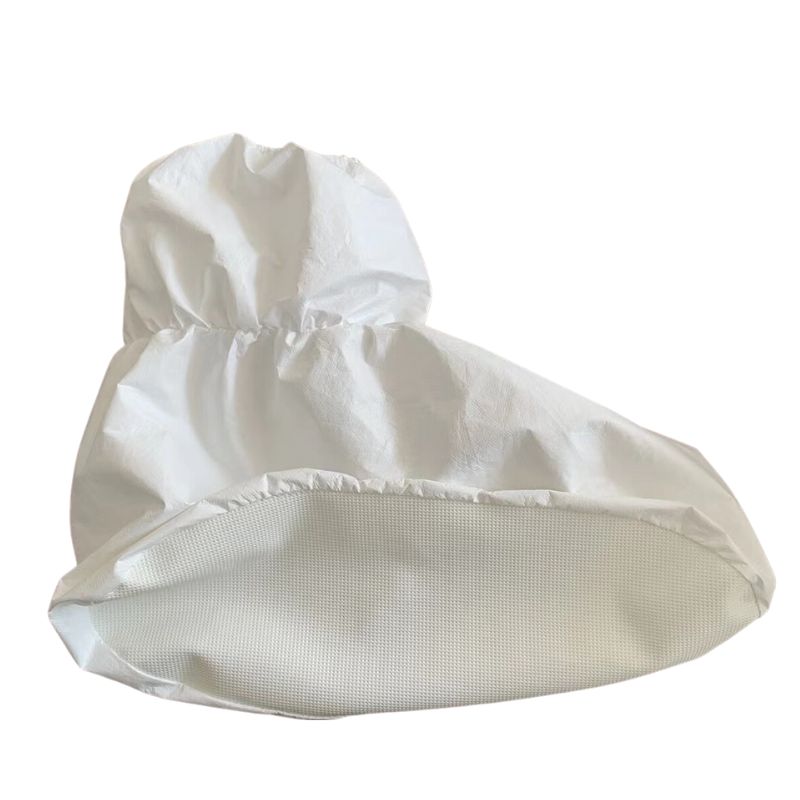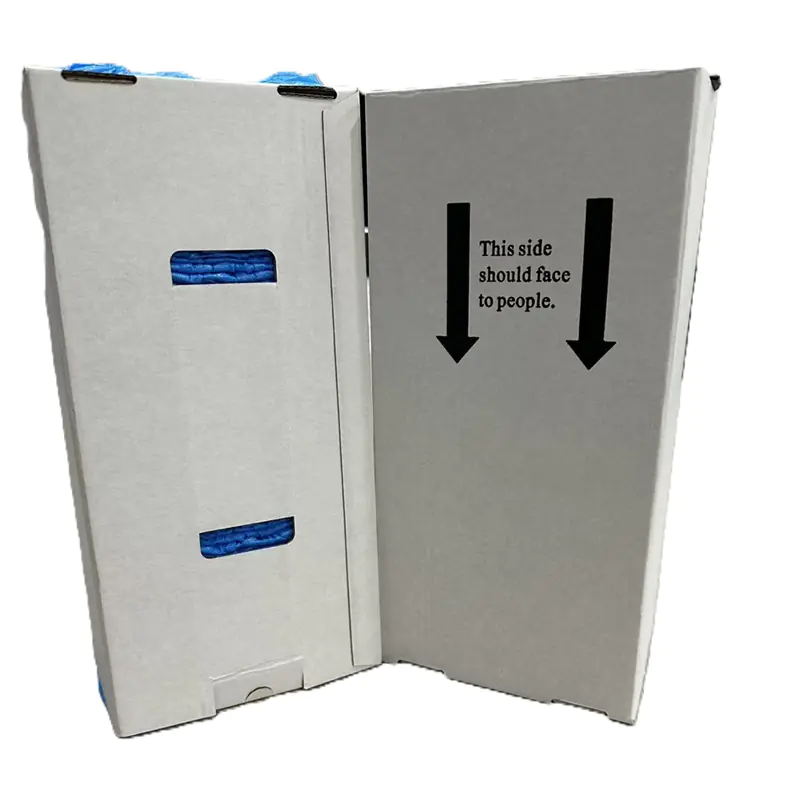Do you want to keep your business clean and safe? It is very important to have good workplace safety. It is also important to have good hygiene et cleanliness. One of the best ways to do this is with disposable work boot covers. This guide will teach you how to choose the right ones for your job.
Boot covers are like little bags you put over your work boots or shoes. They are a key part of personal protective equipment (PPE). PPE is anything you wear to stay safe. These covers do a great job to prevent cross-contamination. That means they stop dirt and germs from moving from one place to another.
Picking the right boot cover is a big choice. You need to think about how strong they are. This is called durability. You also need to think about the price, or cost. Making a smart choice will help keep your workers safe and your workplace clean. Here are some key considerations, or important things to think about, to help you make an informed decision.

1. Think About Your Work Environment
The first step is to look at your work environment. Where will people wear the boot covers? Not all jobs are the same. You need to pick a boot cover that is right for your job.
Ask yourself these questions:
- What are the floors like? Are the floor surfaces smooth like a tile floor? Or are they rough like a bumpy floor at a building site? A rough floor needs a stronger boot cover.
- How long will they be worn? Think about the duration of use. Will a worker wear them for just a few minutes? Or will they wear them all day long? A boot cover worn all day needs to be strong.
- Will there be water or spills? Do your workers walk in wet places? Do they work with liquids? If so, you will need a boot cover that keeps water out.
- Is there any dangerous stuff? Some jobs work with hazardous substances. These are things that could be bad if they touch your skin. For these jobs, you need the best protection.

2. Pick the Right Material
Le matériel of the boot cover is very, very important. The material will decide how strong it is. It will also decide what it can protect you from. There are many kinds of materials to choose from.
Here is a list of common materials:
- Polypropylene (PP): This is a soft material that feels like cloth. It is good for keeping dust and dirt off shoes. It lets air pass through, so it is breathable. This makes it comfy to wear. It is best for light jobs in dry areas.
- Polyethylene (PE): This is a type of plastic. It is very good at keeping water out. If your workers are in wet places, this is a good choice to keep their feet dry.
- Chlorinated Polyethylene (CPE): This is another plastic material. It is stronger than PE. It does not rip or tear as easily. This makes it great for jobs where workers walk a lot or on rough floors.
- SMS (Spunbond-Meltblown-Spunbond): This is a special material with three layers. It is strong. It keeps water out. It is also breathable. This makes it a great choice for many jobs, like in hospitals or very clean rooms.
- Microporous film coated: This material gives the best protection. It has a special film on it. This film stops water and other bad liquids from getting through. But it still lets air out, so it is comfy to wear. This is the best choice for jobs with hazardous substances.


3. Look for Safety Features
Keeping workers safe is the most important thing. Good boot covers have safety features to help with this.
- Non-slip Soles: Floors can be slippery, especially if they are wet. Look for boot covers with semelles antidérapantes. These have special bottoms that help grip the floor. They help stop slips and falls. Many jobs need boot covers with semelles antidérapantes to keep everyone safe.
- A Secure Fit: A boot cover that is too loose can be a problem. A worker could trip over it. You want a secure fit. Look for boot covers with strong elastic tops. Or you can get some with ties. This helps the boot cover stay in place on the boot.

4. Think About the Cost
Every business has to think about cost. You want to find boot covers that work well but do not cost too much. This is called cost-effectiveness. It means getting the most for your money.
The price of one boot cover is not the only thing to think about.
- Buying in Big Groups: You can often save money with bulk purchasing. This is when you buy a lot of boot covers at one time. The cost for each one is usually lower when you buy more.
- A Good Supplier: It is important to have a good supplier. A good supplier will give you high-quality boot covers every time. This is called supplier reliability. If a supplier gives you bad covers that rip, you are wasting money.
- Use the Right Cover for the Job: Do not use a super strong, costly boot cover for a simple job. And do not use a thin, cheap one for a tough job. It will just rip, and you will have to use more. Picking the right cover for the right job helps your business run well. This is called operational efficiency. For jobs that need extra strength, you can choose extra thick boot covers to make sure they last.

5. Make Them Perfect for You
Did you know you can get boot covers made just for your business? A good supplier will offer many customization options. This means you can get tailored solutions that are a perfect match for your needs.
Here are some of the things you can choose:
- Taille : Get the right size to fit over all your workers’ shoes, even big work boots.
- Couleur : You can pick different colors. This can help you tell who is a worker and who is a visitor.
- Thickness: You can choose how thick the material is.
- How they stay on: You can pick elastic tops or ties.
- Emballage : You can choose how they are packed to make them easy to store and use.
Making the right choice in personal protective equipment (PPE) is very important. For some jobs, you might need more than just boot covers. You might need a disposable full body protection suit for total safety.

Faire le bon choix
Choosing the right disposable work boot covers is a big step for your business. By thinking about these key considerations, you can make a great choice.
Think about:
- Your work environment.
- The right matériel pour durability.
- The best safety features.
- The total cost.
- Le customization options you need.
When you make an informed decision, you help keep your workplace safe. You also help keep it clean. And you help your business run well. A good, strong boot cover is a small thing that makes a big, big difference.










